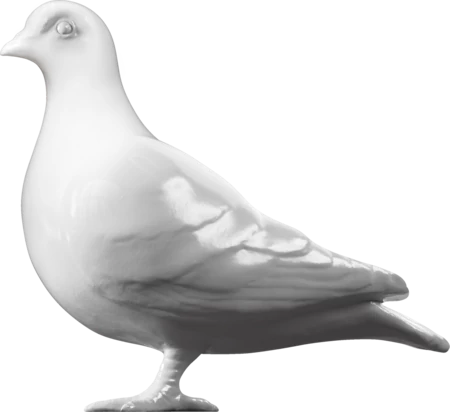Life stories & oral histories
Discover the unheard stories of everyday Londoners through the museum’s powerful oral history collection, capturing raw emotions and personal experiences dating back to the early 20th century.
Ever wondered what London life was like in the early 20th century? Well, what better way to find out than listening to those who lived during the time.
Oral history captures first-hand evidence of the past augmenting available data and statistics about London with real memories and emotions. And London Museum has around 5,000 hours of recorded oral histories and life stories of Londoners from 1985 to the present day. The collection continues to grow. The museum also has sizeable recordings from the London History Workshop (1983–1992) and the Port and River Project (1985–1989).
Why are oral histories important?
In these recordings, we have direct accounts of Londoners sharing their experiences of being born in, migrating to and finding refuge in London through the decades. They make the past come to life in an engaging and personal way, helping us compare and contrast our experiences.
The collection has interviews with well-known Londoners like fashion designer Mary Quant and Sam King MBE, co-founder of the Notting Hill Carnival and former mayor of Southwark, as well as Ian Livingstone, the creator of Lara Croft. But what makes our collection unique and truly representative of the city are the life stories of the everyday Londoner.
The oral history recordings in our collection give a voice to people on the margins of society, with raw emotion. They bring to light the experiences of groups of people who are often barely mentioned in the history books – the poor, women, ethnic minorities and disabled people.
Voice of the everyday Londoner
Take, for instance, the life story of Winifred Herbert (born 1892, one of the oldest interviewees in our collection), who worked as a laundry maid, and then served as a cook during the Second World War. Or Rowinton Boomla, born from an Iranian-descent family in Bombay (now Mumbai in India), who came to the UK with his family in 1928. Boomla describes the journey from the Gateway of India to King George V Dock in England. The journey took roughly one month.
Our focus has been to document the voices and everyday lives of underrepresented, mis- or non-represented communities in other sections of our collections. In this way, the museum aims to build up a detailed picture of what it was like to be a Londoner during the 20th century and into the 21st century.
For example, HH Haynes, born in 1903 in Walworth, talks about his working life as a shirt-cutter in Charing Cross from 1918 to 1975. His interview not only brings to life the shirt-making tools he donated to the museum, but also gives us an idea of language and use of slang during the time.
“…very cold (laughs), very cold I should say that [was] the first impression [of London]…”
Cristina Navarette (2006)
Highlights from our Oral History collection
While most of our oral history collections are audio, the museum has also started collecting video recordings. Some key areas of focus have been:
- communities with a strong presence in London
- people who arrived from Jamaica on the Empire Windrush in 1948
- London taxi drivers
- Second World War and the Blitz (including, marking its 50th anniversary)
- London’s fashion industry
- the campaign against the M11 Link Road in the early- to mid-1990s
- the London 2012 Olympic and Paralympic Games
- LGBTQ+ rights
- Londoners’ experiences during the Covid-19 pandemic
Port and River Project
The four-year port and river oral history collecting programme began in 1985, only a few years after the last of London’s upstream docks closed. The interviews focused on men and women who had worked in the docks in the 20th century. With 200 interviews totalling about 500 hours of audio, the collection features interviews with dockers, engineers, stevedores, lightermen, machine operators, customs officers, and policemen, among many others – even a pie and mash shop proprietor. We also have interviews with those in associated manufacturing and trades, such as the fur trade, and employees of renowned designer Hardy Amies.
The interviews span their working lives, labour relations, family life and childhood, community and social life, and the two world wars.
“The recordings give a voice to people on the margins of society”
London History Workshop collection
In 1992, London Museum acquired the audio-visual archive of the London History Workshop. Established in 1983, the centre aimed to set up “London’s first oral history archive devoted to the proper conservation of the many voices of today’s Londoners, speaking directly on nearly every aspect of their lives, from childhood to old age”.
The archive comprises around 3,000 audio tapes and 500 videos collected by community groups, community-based historians, television companies and academics working across London. The recordings cover a range of subjects, including songs from the East End, communism, feminism, schooling, the 1926 General Strike, the London County Council, and the Greater London Council Popular Planning Unit, among others.
More in our collections
-

Modern collections (1700s–present)
London’s socio-cultural and economic history from the 1700s, including the world’s largest Suffragette collection
-

Archive collections
The Business, Port and River, and Sainsbury archives offer insights into London’s history, commerce and culture
-

Library
The Library holds around 30,000 volumes (including monographs, periodicals and maps), from the 15th century onwards
-

What we collect
The museum collects objects that help to tell the stories of this diverse, multicultural city of over nine million people




